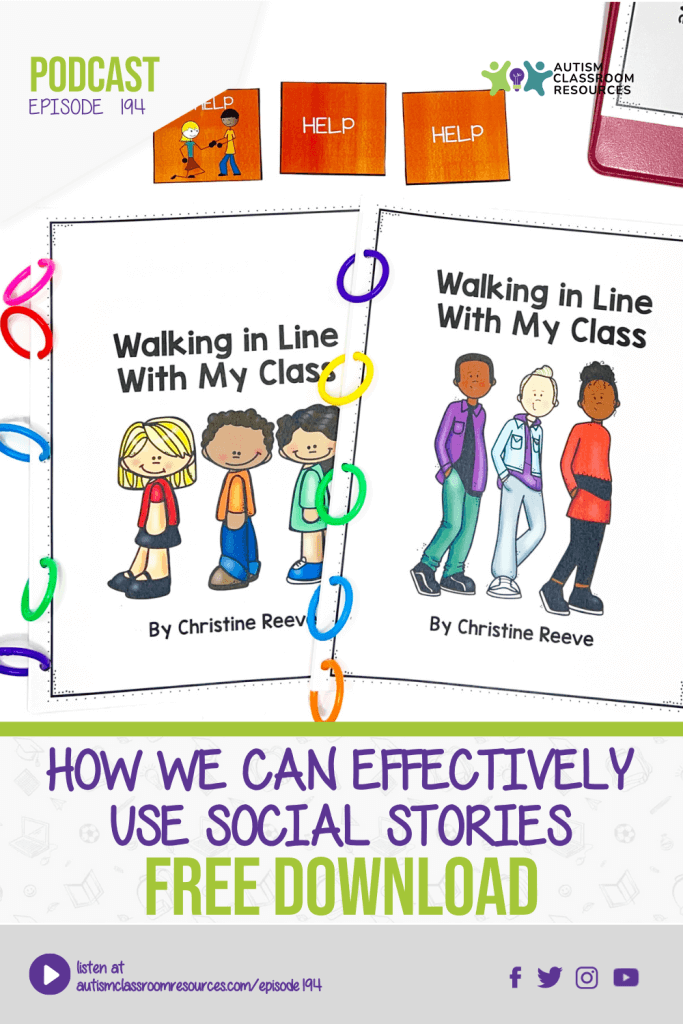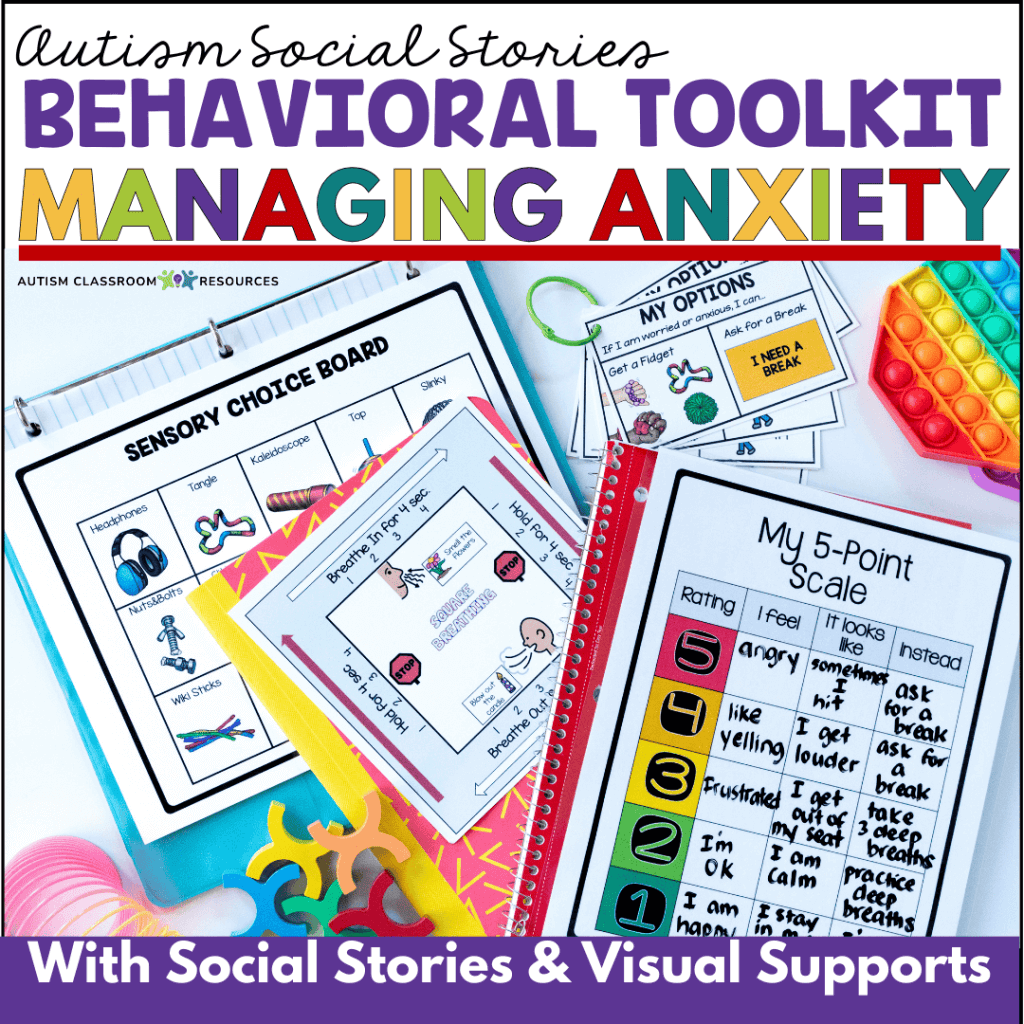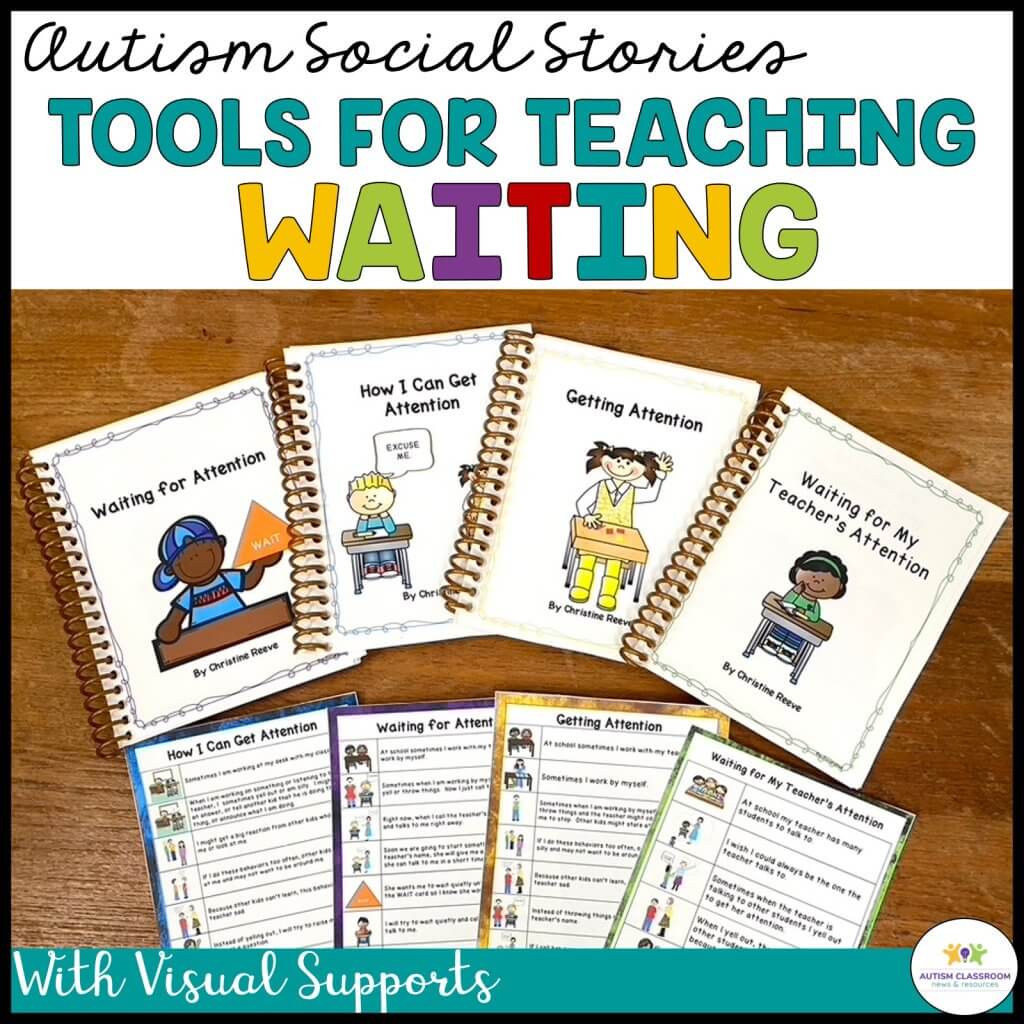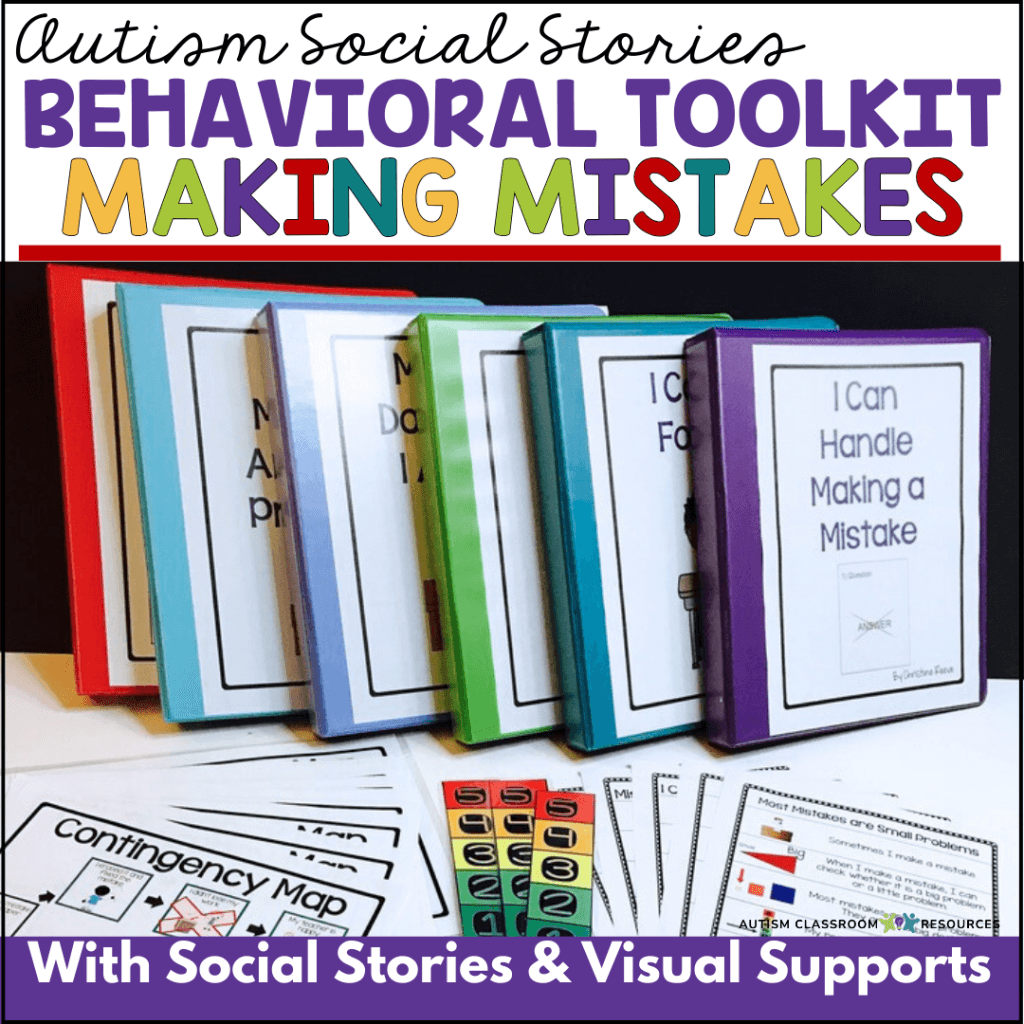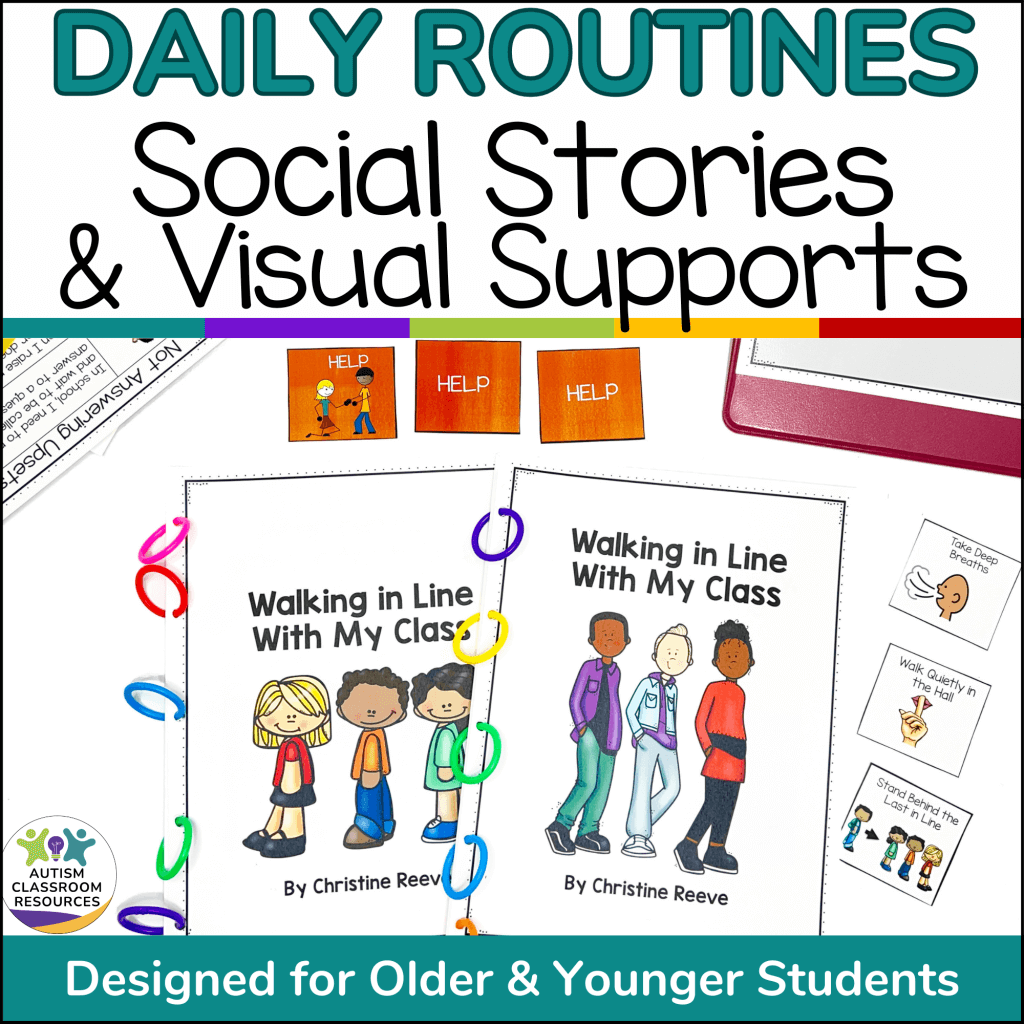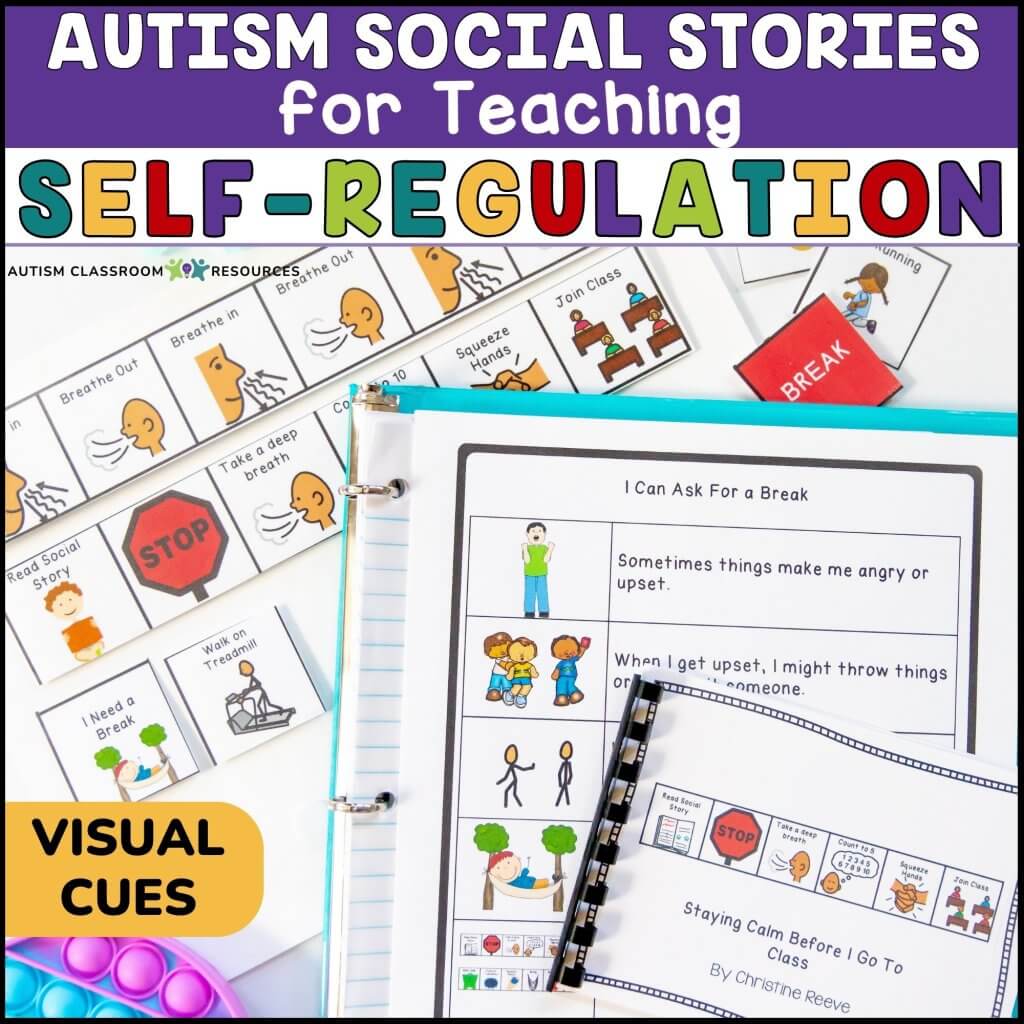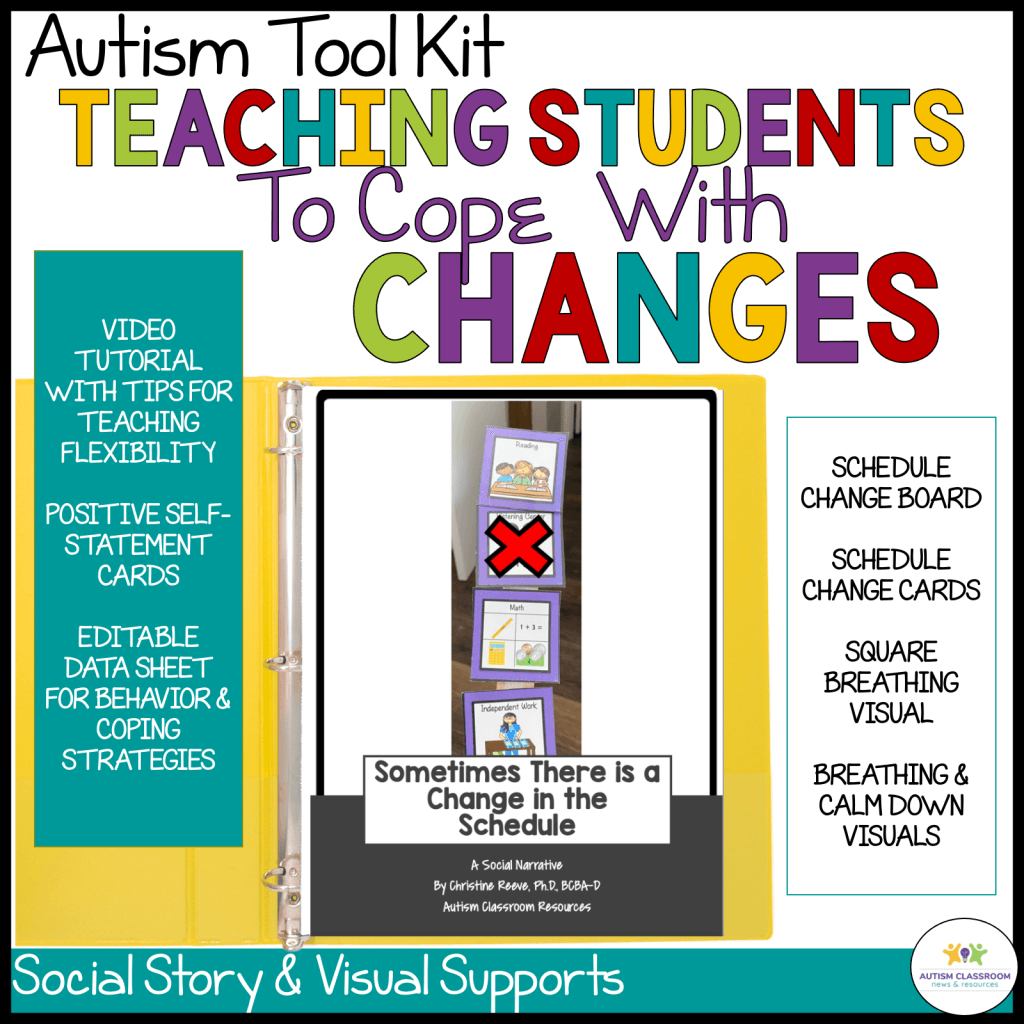Welcome to the Autism Classroom Resources Podcast, the podcast for special educators who are looking for personal and professional development.
Christine Reeve: I’m your host, Dr. Christine Reeve. For more than 20 years, I’ve worn lots of hats in special education but my real love is helping special educators like you. This podcast will give you tips and ways to implement research based practices in a practical way in your classroom, to make your job easier and more effective.
Welcome back to the Autism Classroom Resources Podcast. I’m Chris Reeve, and I’m your host. And last week I talked about the research that supports doesn’t support the use of social stories.
Social stories generally are considered an evidence based practice, but there’s a lot of variability to them that make researching them very difficult. And I talked about all those kinds of issues, and the fact that they are effective for some students than others. And you can go back and listen to that episode at autismclassroomresources.com/episode193.
Today, I want to talk about how we apply that research, and how we can create and use social stories for students they are effective with in the most successful manner. I also have a free resource for you at the end of this episode. You’ll find a number of social stories as part of behavioral toolkits. So they generally have visuals and other supports with them. And you can find them all in my store at autismclassroomresources.com/socialstories all one word. So let’s get started.
So, based on all the research that I’ve talked about last week, let me give you just a very quick summary. There is some evidence that shows social stories are effective. Most researchers indicate that it is at least a promising practice, if not enough evidence to be an evidence based practice. There is some research that shows maybe it’s best for students with autism versus other special needs. But there is some research that supports the use of it outside of the autism diagnosis.
And the studies that have been most effective have been typically using it to reduce challenging behavior, rather than improving socialization types of skills. But again, I think we see it used more frequently for reducing challenging behavior than we do for just playing proactive types of strategies.
One of the things that we also know from the research is that they are effective for some students, and not for others, which is not surprising. I think that kind of sums up a lot of our different interventions, there is no universal intervention. That’s why special ed classes aren’t taught by robots. They are taught by people who can look at the student and determine what’s working and what’s not based on your data. And we’ll talk a little bit about that today as well.
So there are a number of different types of social narratives. Typically, social stories are written in response to individual needs. So we might have a bank like in the Special Educator Academy, we have a bank of social stories. We have that so that members have a jumping off place, and some ideas to put a story together for their own students, sometimes a run of the mill social story is all you need and you don’t need something that is as individualized. But if we’re really going to get in some of those perspective statements, or the coping statements that are important for this student, there probably will be a little bit of individualization needed for most students. But we can do it on a variety of topics.
Situations that are good targets for social narratives are things like situations that are existing conflict situations. So kids who don’t like to get ready to go to school, that’s a time kids who always have to be first in line and that’s not possible. Table manners, a specific fear like fear of hair dryers or vacuum, that might be a way to help them. Future events that we anticipate might be problematic.
So for instance, I have a free one on winter break, to help students understand what winter breaks going to be like what they might do, when they’re going to track when they’re going to come back and things like that. We might do it for a birthday party, a visit to Santa at the mall, a graduation ceremony, having a new baby in the family. So we can do you know having a program that we have to go to for the holidays would be an example.
And we can also use them for kind of obvious misreading of social cues by students, so inability to follow a group game or know what role to play in a group activity, when to change subjects in a conversation because people aren’t interested in talking only about your favorite topic.
So when we think about implementing social stories, there’s really four steps. We need to plan it out. We need to create or find the story, customize it if we need to. We want to implement it and we want to evaluate whether or not it’s working.
Now, I mentioned last week that I had a student that it was like social stories were magic of all the students I’ve ever worked with, which is a very large number, I would say that he was probably the most adept at using them. I can write a social story off the top of my head on the board, and his behavior would improve, it wouldn’t get 100% better, but it would really make it easier for him to be redirected, if needed, and things like that. They just spoke to him in some way.
But I’ve also used them with students that it really was not a big difference. So you do need to figure out if your student is a student for whom social stories are a good strategy. So we need to plan for the student.
So one question you might ask, have social stories been used effectively in the past? Do we know that this has worked? Are the student’s communication skills sufficient to be able to comprehend this social story and actually put it into motion? So are they going to really understand the story and your story obviously, is going to have to be written at different levels, depending on the level of students.
All the research indicates that social stories may be effective for some and not for others. So past performance is going to indicate whether or not it’s worth doing to Kokina & Kern in 2010, found that students who have lower cognitive skills, but higher communication levels seem to benefit the most from the studies that they looked at. But I think it’s important just to look at your different students and see what works and what doesn’t.
We need to figure out what specific situation or behavior or skill that we’re going to address or target. And this is important because we need to really focus our social story on a specific behavior or a specific skill or a specific situation. We don’t want it to be everything that happens.
So we don’t want you know, when I wrote the winter break social story, it focuses on just understanding that there will come a time that I can see on the calendar of when I won’t be coming to school. These are some things I might be doing. I can look at my calendar to see when I’m going to come back to school. It isn’t every single situation that could come up. It isn’t every single, you know, thing they might do during winter break it’s examples.
But I think it’s important that we recognize that we know why we are giving the social story, what skill are we targeting? because how else can we determine whether or not it’s effective. And what we’re trying to do when we clearly define the behavior or the skill or the situation is to paint a picture of it.
If our target skill or situation is a complex situation, break it down to just one skill, behavior, or element of the situation in each story. So for instance, if you purchase one of my behavioral toolkits with social stories in them, you’ll find that there’s multiple social stories. And that’s because they address individual types of skills, and individual behaviors. And often behaviors or skills come in clusters that we’re trying to address. And that means that we need to have more than one social story about each of them.
Creating multiple stories that are simpler, has been found to be more effective. Complex chains of behavior were less effective than simple behaviors in Kokina & Kern literature review. So that’s an important element I see a lot of times people trying to do too much with one story, you’ve really got to break it down.
Now, you also want to include in your targeting, if it’s a behavior that you’re targeting, a challenging behavior, do an FBA before.
And this is what I think is interesting. In 2015, Pane et al. found social stories that focused on the function of the behavior were more effective than social stories that did not focus on the function. Similarly, Kokina & Kern found three studies that use stories with an FBA were more effective. So I think that that’s an important component.
When I write my social stories I’m looking for why is this behavior occurring, because that begins to tell me some of the perspective of the student, and that allows me to pull out what that coping strategy is going to be, because it’s going to be a replacement behavior from the FBA. That is the coping strategy that we’re trying to get them to use to handle the situation we’ve identified that is difficult.
If we know from our FBA, that’s not to say you can’t use a social story without an FBA, you can know the function of a behavior without doing FBA. So if you think you know why the behaviors happening, you might try a social story focusing on that function. Sometimes I do this, to get out of the situation. And you might even say that in the social story, and then when that happens, I could do this instead.
So that is a really important component that I think is missing a lot and social stories. People tend to write social stories is this is what you need to do do this, without an understanding of why the behavior is happening in the first place. Or they read a story that says don’t do that.
Then we need to create the story. We want to consider our language and our reading level of the student. We want to separate out thoughts in the individual sentences and possibly for some readers on the individual pages.
So for instance, when I create my social stories, there’s typically one that has each sentence or idea on a page with a picture. And then a one pager for students that can handle all that information on one page.
You can have the student participate in writing the story. And I think that that’s an important thing for a lot of our students, because it gets them thinking about how they can address this behavior. And that makes it more likely that they’re going to be able to manage that and have buy in into what you want them to do.
So your format and your presentation, the way you develop it may differ depending on your student. Stories with illustrations have been found to be more effective. Studies that had students write and read their own social stories did better than those where it was simply teacher directed. So I think that really points as to why we want to do this.
You want to use first person because you want to use the student’s perspective.
Now, that does not mean that everything is First Person. So for instance, I used to give my grad students the assignment of writing a social story for a student on their caseload.
And I remember one that came back with a social story about a kid who was struggling when he was running late in the morning, and dad had to bring him to school instead of him coming to school on the bus. And he particularly didn’t like that he didn’t like it with dad brought him to school.
So the social story that the student wrote was – In the morning and you’re ready to go to school. Sometimes I get ready, and I’m running late and when that happens, my dad takes me to school. I like to go to school on the bus, and then like to go to school with my dad.
And as I read it, I’m like, I thought the whole problem was that he doesn’t like to go to school with his dad, because that means the whole schedule is off and he has a really bad day. She’s like, yeah. Telling him that he likes it isn’t going to solve your problem. If you could tell him that he likes it. He doesn’t need a social story, just say you like this. But frankly, nobody ever liked anything because you told them that they had to.
So I think that that’s an important component, that we really have to make sure that we’re thinking from the student’s perspective.
You want to use present or future tense, we’re not talking about things that happened in the past. We’re talking about going forward, this is what we’re going to do. You want to include coping or what are sometimes called control statements. And those are simply here’s something I can do to handle this situation.
You can state their expected behavior like this is what people are expecting of me. That’s part of the perspective of other people. You know, that’s the next piece is to show the why. Why do I have to do this expected behavior? Well, because when you’re talking out in class, it’s disrupting the other students’ work. The other students have a hard time working.
And I try really hard to avoid absolutes. So I use try rather than will do this. I use sometimes this happens instead of always, because I’ve worked with a lot of students that work in a black and white kind of thinking. And then when it doesn’t happen, the whole thing goes out the window. There are going to be times that I’m going to try it, and it’s not going to work and I need to know that that’s okay.
You can also when you create your story, you can combine it with different things. Sometimes it’s a paper and pencil story, but you could also have PowerPoint presentation if your student isn’t a great reader. It’s very easy to record a PowerPoint presentation with narration for each each slide, and the student could then listen to it on the computer or on a tablet. You could also make an audio version of the story, just use the notes, microphone on the notes on an iPhone, for example. You can also include video modeling with social stories, and that might be a good pairing for some of our students.
Now, I want to give you, given all that, let’s talk about what is not a social story. I gave you the example of the student who didn’t like come to school Dad.
This was a social story that I found one time when I went into a classroom. It’s time to go outside for recess. Bobby can go down the slide, climb on the bars or sit on the bench. Bobby does not touch the tree outside. Bobby does not pick leaves off the trees. Bobby has fun outside, going down the slide, climbing on the bars, or sitting on the bench. Bobby can do a good job.
Okay. This isn’t written from Bobby’s perspective, first of all. It’s not written in the first person. It isn’t a social story, because basically, it’s a bunch of rules. Don’t do this, don’t do this, do this instead. It also has that fallacy of Bobby has fun doing this. Well, Bobby had fun doing that, my guess is he wouldn’t be picking leaves off the trees, he would be doing those other things.
So again, just telling him that it’s he’s having fun isn’t going to actually make that happen. I rewrote the social story to be this.
After lunch, it will be time to go to recess. Now I include sentences like that, because I want to give more information than direction. I go to recess with my friends at school. There are lots of things to do on the playground. I can go down slide. I can climb on the bars, or I can choose to sit on the bench and watch, which he might choose as a coping strategy. I will try not to touch the trees or pick the leaves.
After recess, I will be able to have five minutes of computer time if I follow the rules. And there were specific rules that went along with the social story separate from the story. So again, we might use it in combination with it. So I changed it to the prospective depending on what skills the student has, if this was a student who was verbal and interactive or you’re working more on social interaction, then I might give the perspective of, other kids won’t come over and play with me if I’m picking leaves off the trees or something like that.
If this happened to be a student for whom he was very happy to be left alone, and he really needed some downtime during recess, so we didn’t infuse the social component into this.
So the story is going to look different for a different situation and a different student. So you can have lots of different formats for social stories. They might be written, they might be movies, they could be written on the whiteboard at the last minute when you realize you have an issue or you realize there’s a schedule change.
They might be scribbled on a post it note. I once wrote an entire fire drill social story, on the back of two pamphlets I found very quickly to write on. And as a consequence, I only have half of that story left, somehow I lost the first one.
You can make a PowerPoint one, you can make a full page with all the information. And then for some students, they need one thought with one picture at a time. But it’s important that we focus on the function.
So for instance, in my waiting for attention social story, in my waiting behavioral toolkit, that teacher wants me to wait quietly until she can talk to me, I have the wait cards. So I know she won’t forget me. The wait cards are part of the teaching strategy of teaching the student how to wait. I will try to wait quietly and calmly until the teacher comes to talk to me. So we’ve given him a coping strategy of that’s why I’ve got this weight cards, because when I’m showing it, my teacher remembers that I need her. So I don’t have to keep yelling out all the time. So you want to focus on that function.
Then you want to make sure that you’re implementing it that you’re having the student participate in or reading the story on his or her own, introducing the social narrative just before the situation that it addresses because it is typically used as an antecedent preventive strategy. I like to allow them to reread it as many times as they want. I think it’s one of the reasons that it works is it’s concrete and they can go back to it and it always says the same thing. And I would keep it for future reference because sometimes it’s just really helpful even if you don’t use the exact same story, it’s really helpful to have something to jump off of with to give you ideas.
You can review for a comprehension check as part of your implementation, have the story the student tell you the story, without reading it directly to you. Have them answer questions about it. Makes sure that they truly understand, that that you’ve written it at a level that they can understand.
So obviously a preschool social story’s going to look very different than one I wrote for a high school student who didn’t think he should have to do homework because it was schoolwork. You know, a student who’s having problems at recess in preschool, those are to very different skills.
We can try to fade the stories over time. Usually, I’ve found that students just kind of drop out the story as they learn the skills and don’t need to review them all the time. But they will sometimes want to go back and read them.
Kokina & Kern found that studies that use comprehension checks after reading the story did get a better result. So there is some research for kind of checking in with the student and make sure that they’re really reading and understanding the social story.
You also want to determine whether you’re going to use it by itself or you’re going to use it in combination. We’re typically not doing research studies in our classrooms so we don’t necessarily need to say, Well, I’m only going to use a social story so I can see if that’s what’s causing the change. So a lot of times we’ll use them at the same time, we’re also using visual supports and things like that.
And then we want to evaluate, I use often a behavior rubric as a way to assess the student’s behavior. So what is the strategy that we want them to use? What is the behavior we want to see? And how did we do with that as far as the basic rubric for social skills?
So I have a free another free social story. And I told you about the winter break one, and I’ll give you that information in just a minute. But I have another one that’s called Who’s in Charge Here, which was written for students that I’ve met over the years, who struggled with understanding the importance of either following the teachers directions, or recognizing that only the teacher should be giving the direction, sometimes I find that perspective, is something that can be helpful. And you can grab that for free in our free resource library at autismclassroomresources.com/free.
And I have a free social story on winter break that I told you about. It has calendars, it’s black and white, you can send it home with the kids for them to review it with family about when they’re going to come back to school and things like that. And you can find that one in my store. It’s for free at autismclassroomresources.com/winterbreak.
And as I said, I’ve got a number of different social stories as part of the behavioral toolkits. Generally, they come with teaching protocols for replacement skills, and visuals and other supports. And you can find them all in my store at autismclassroomresources.com/socialstories, and I’ll also make sure that those links go in the show notes.
I will be back next week to shift gears a bit and talk about how educators can maintain the joy of teaching and prevent burnout. Because I think holidays is a good time to think about that as you get a few moments to reflect. So I hope you’ll be back for that and that I’ll talk to you soon.
Thanks so much for listening to today’s episode of the Autism Classroom Resources podcast. For even more support, you can access free materials, webinars and Video Tips inside my free resource library. Sign up at autismclassroomresources.com/free. That’s F-R-E-E or click the link in the show notes to join the free library today. I’ll catch you again next week.
